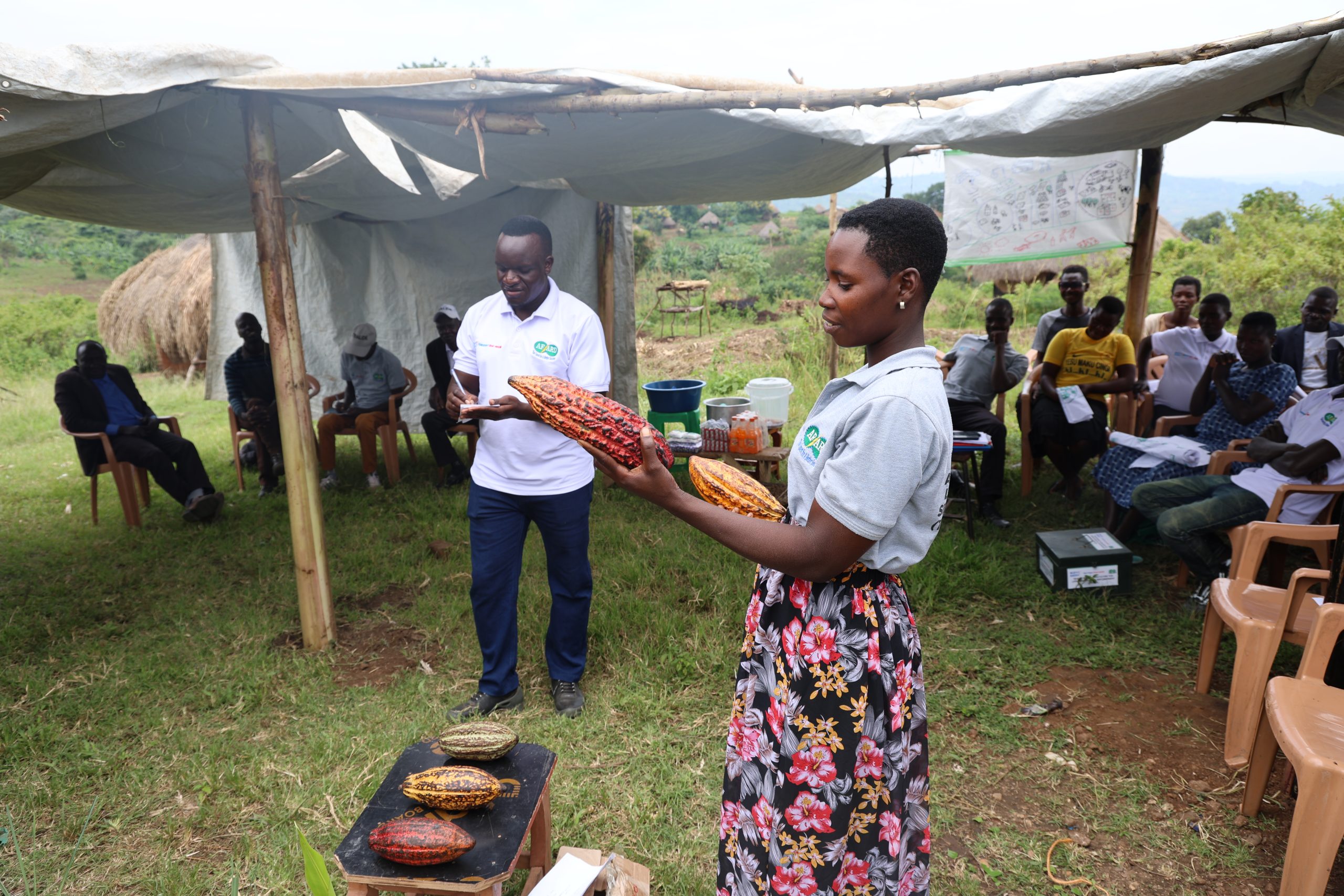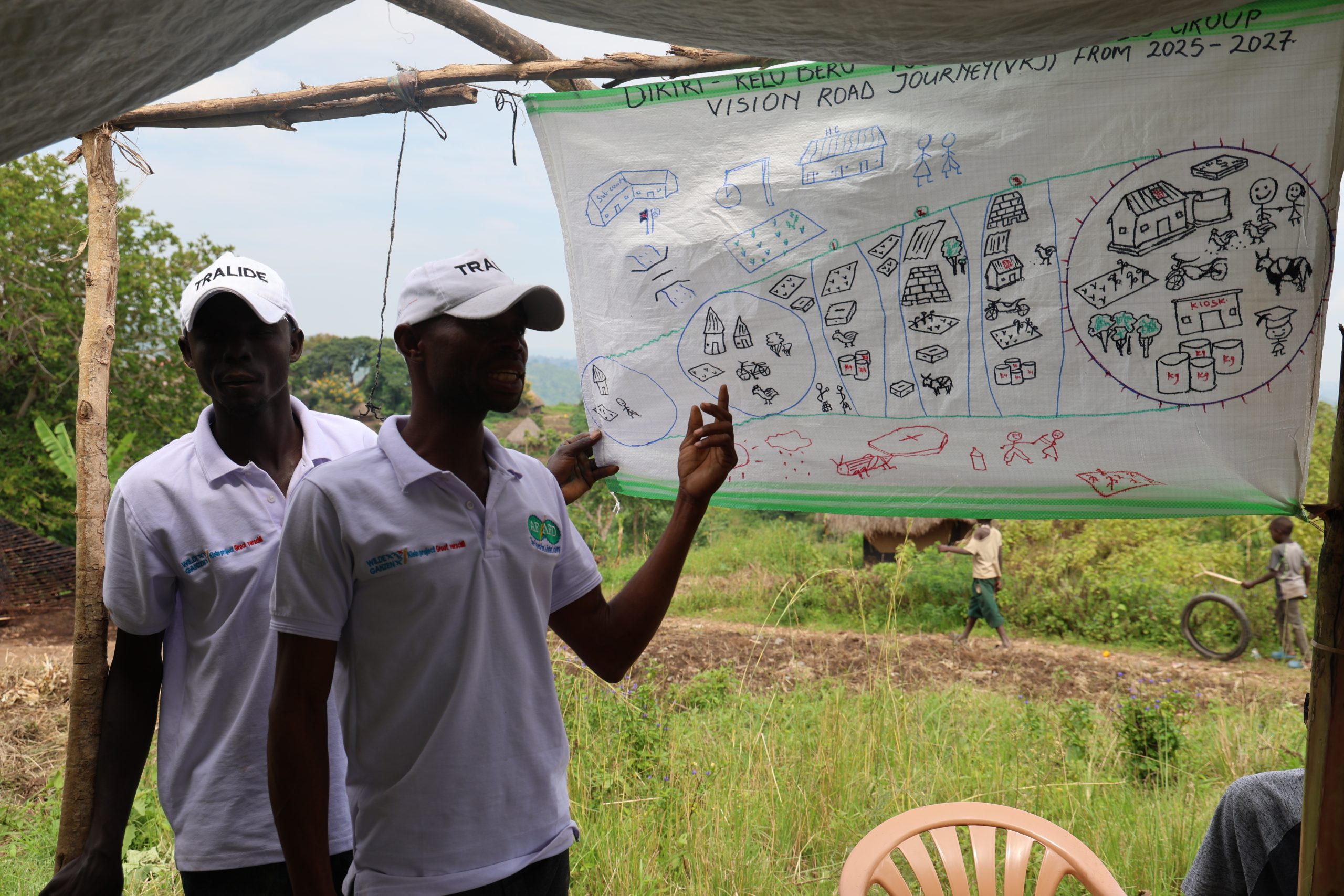Better together: improving livelihoods of couples

‘Enrolling only one spouse in a project can cause problems in family dynamics. If you train the husband, the wife will be left with nothing if they break up. If you train the wife, the husband can become jealous and cause problems. If you train them as a couple, you make them responsible together for the development as a family but also build a fallback position to both should the worst (marital breakdown) occur.’
More than only Village Savings and Loans Groups
The Agency for Accelerated Regional Development (AFARD) provides training in agriculture to groups of young married couples in rural Uganda.
Forty people (twenty couples) come together in Village Savings and Loans groups. Wilde Ganzen supports these groups in fifteen villages through the Blue Ambition Fund. These Village Savings and Loans groups are formally registered, have a bank account, and the money saved by the group is then loaned to be invested in their agri-businesses.
But these groups do more. In every group, AFARD has trained volunteers to work as ‘mentors’ to the group. One person was trained as an agri-ecological expert (e.g. on cacao farming), another on para-veterinary or as the head of the savings and loans activities.
The Village Savings and Loans groups do saving and loans among the members. But they do more. They learn together how to improve their agriculture, through the support of the mentors.
The groups support members to identify potential income generating activities and train members on personal money management. Another important aspect is the gender action learning the groups are participating in, to encourage gender equality.
![]() Married couples
Married couples
What is unique about AFARD’s approach is that they only work with young couples in this program. Every couple develops a ‘family development plan’, a vision for their family for the next few years. They draw their current situation and draw where they want to be in five years.
For example, a family has one chicken now and wants to have five chicken, a goat and a cow in five years. They have a little baby, and draw that in five years this child will be in school. And then they start thinking about; what should we do to get there? We need to plant more cacao and bananas, we need to invest in better seeds etc. The plan helps them to visualize what is needed to reach their goals. And it helps them to work towards it together.
The couples are excited about this way of working together. They are sharing more responsibilities now. In the project, but also in the homes they say. It is changing the balance within their relationship and both men and women are happy with this new balance.
New crops
AFARD did an analysis and concluded that the traditional commodities cannot bring enough income to bring families above the poverty line.
Therefore, new crops are introduced to the farmers like cacao, banana and soya bean. Also poultry is added.
Cacao can be very profitable, but it takes a few years to grow. In the meantime, people can harvest soya beans, benefit from the poultry and get an income from these products.
The family development plans helps them to see the end goal and work towards it. Also if a crop doesn’t yield as much as hoped, the future plan is there. The weather is unpredictable and this can be a challenge. Especially when growing cacao, it can be very profitable but it is also very vulnerable for weather conditions. But by having various crops, there are also various options to harvest and earn money.
The approach of working with couples is an innovative but successful approach. It is great to see how couples work together for the benefit of their families! Besides, it systematically promotes gender equality without sitting for a gender workshop that many conservative men resists.


